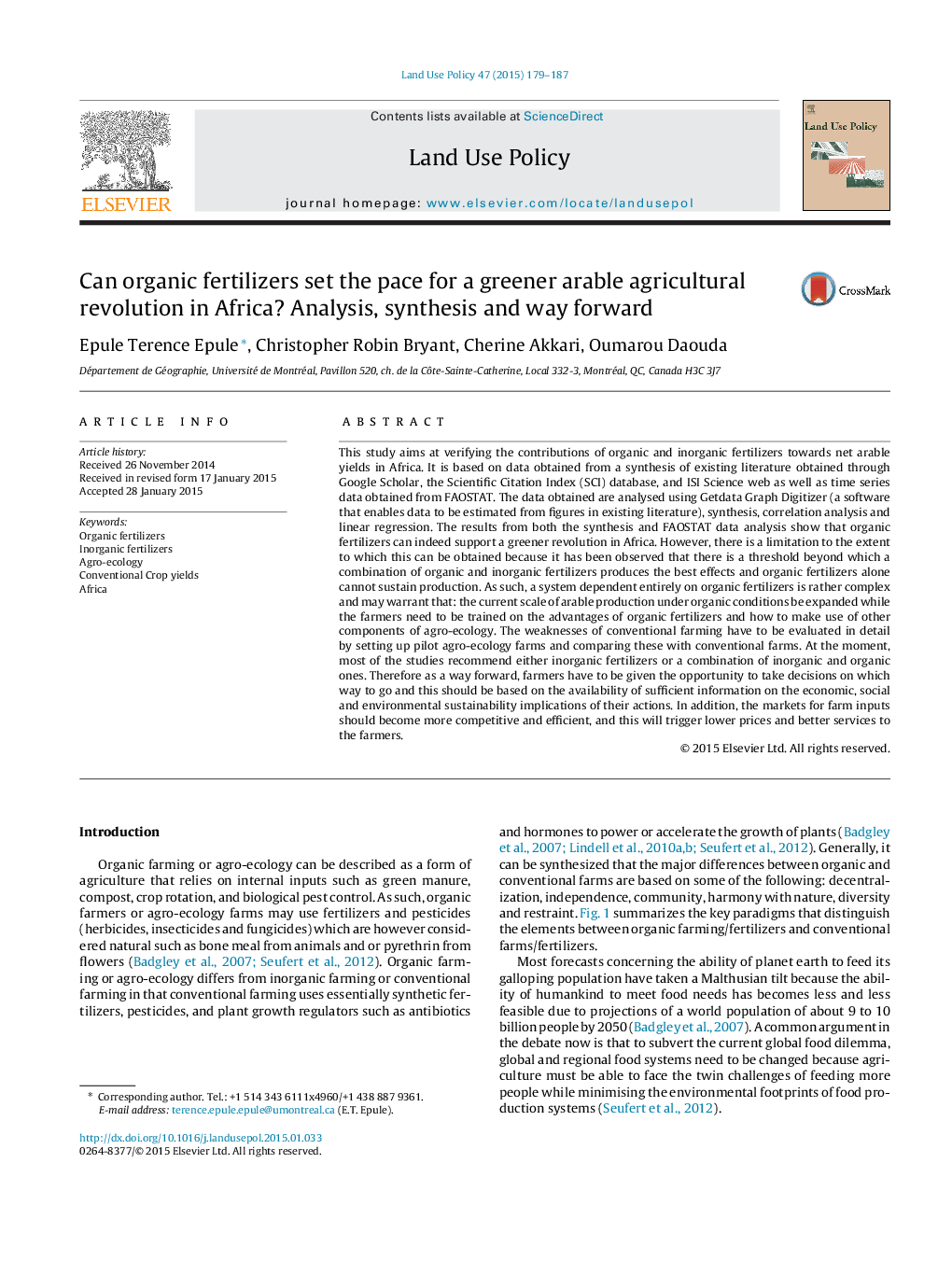| Article ID | Journal | Published Year | Pages | File Type |
|---|---|---|---|---|
| 6548098 | Land Use Policy | 2015 | 9 Pages |
Abstract
This study aims at verifying the contributions of organic and inorganic fertilizers towards net arable yields in Africa. It is based on data obtained from a synthesis of existing literature obtained through Google Scholar, the Scientific Citation Index (SCI) database, and ISI Science web as well as time series data obtained from FAOSTAT. The data obtained are analysed using Getdata Graph Digitizer (a software that enables data to be estimated from figures in existing literature), synthesis, correlation analysis and linear regression. The results from both the synthesis and FAOSTAT data analysis show that organic fertilizers can indeed support a greener revolution in Africa. However, there is a limitation to the extent to which this can be obtained because it has been observed that there is a threshold beyond which a combination of organic and inorganic fertilizers produces the best effects and organic fertilizers alone cannot sustain production. As such, a system dependent entirely on organic fertilizers is rather complex and may warrant that: the current scale of arable production under organic conditions be expanded while the farmers need to be trained on the advantages of organic fertilizers and how to make use of other components of agro-ecology. The weaknesses of conventional farming have to be evaluated in detail by setting up pilot agro-ecology farms and comparing these with conventional farms. At the moment, most of the studies recommend either inorganic fertilizers or a combination of inorganic and organic ones. Therefore as a way forward, farmers have to be given the opportunity to take decisions on which way to go and this should be based on the availability of sufficient information on the economic, social and environmental sustainability implications of their actions. In addition, the markets for farm inputs should become more competitive and efficient, and this will trigger lower prices and better services to the farmers.
Related Topics
Life Sciences
Agricultural and Biological Sciences
Forestry
Authors
Epule Terence Epule, Christopher Robin Bryant, Cherine Akkari, Oumarou Daouda,
